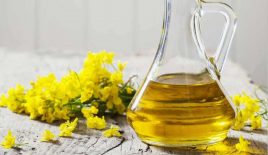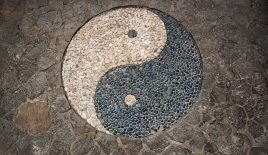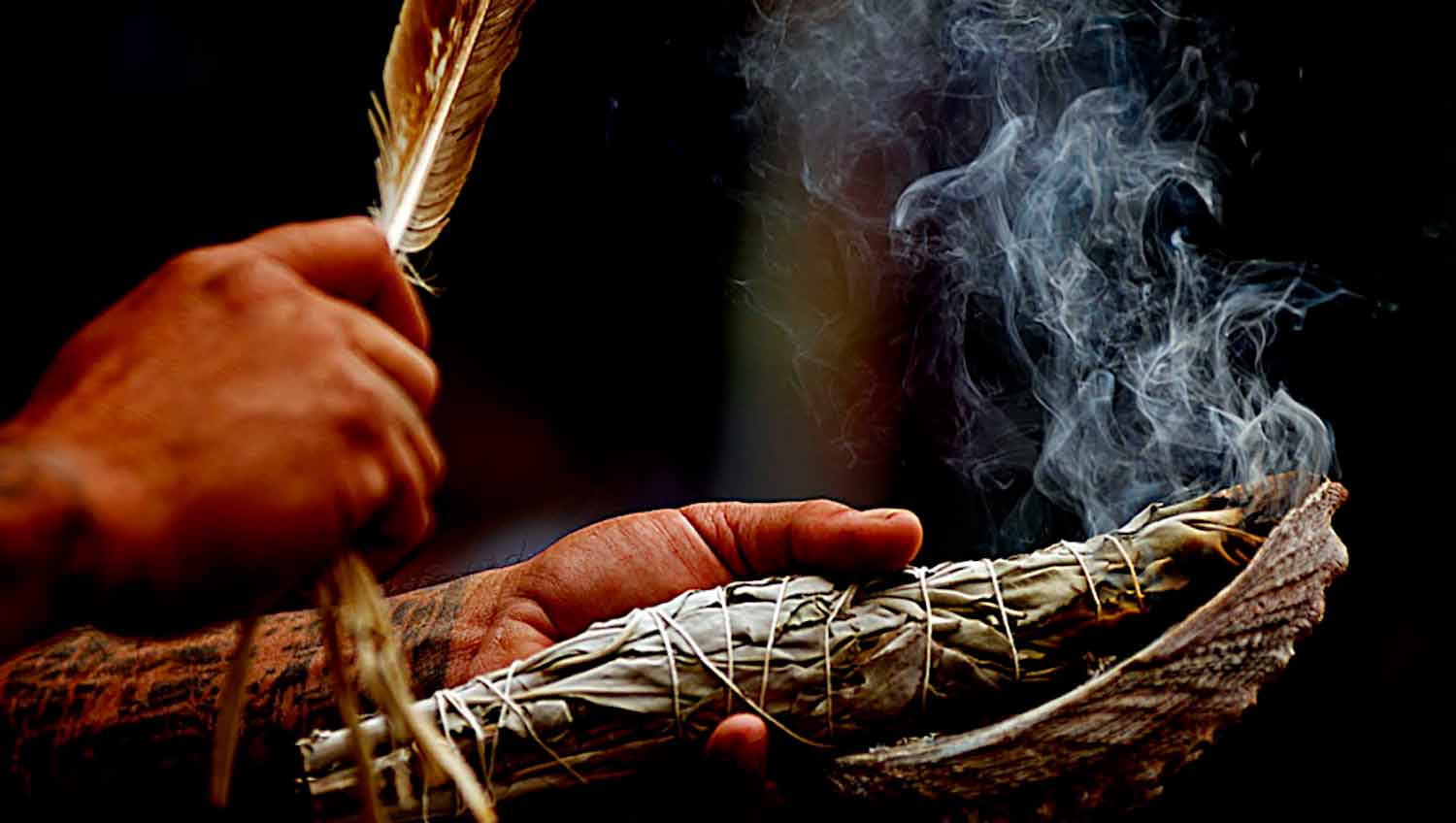The Art Of Smudging – A Shamanic Cleansing Ritual – The Sacred Science
If you grew up religious, you probably witnessed the ritualistic use of smoke in ceremony. For me it was frankincense and myrhh being burned during Sunday mass. For others it might be smoldering incense at their Buddhist Temple, or the spiraling tendrils of bukhoor in a mosque.
There is something primordial within us that connects smoke with spirituality.
In Native American tradition, it’s seen as a bridge to the higher realms, a way to bring in good spirits and dispel the negative or stagnant ones. The most common smoke-purification ritual used by the northern tribes is a technique called smudging.
This practice (or some variation of it) is embraced by almost every one of the native cultures we’ve worked with in the western hemisphere.
When we see a unique method used by different tribes across multiple continents or land masses, it’s a strong indication that it yields very real physical and/or spiritual benefits.
Below, I want to show you how to try smudging yourself and also explore some of the wisdom behind this ancestral art.
A Shamanic Cleansing Ritual
Smudging is the ritualistic burning of herbs and plant resins in a shell or clay bowl while prayers of gratitude and wellbeing are said aloud. The smoke is traditionally fanned using the hand or a feather (eagle feathers are treasured for this) and directed over a person or throughout a living space. The purpose is to wash away impurities, sadness, anxieties, dark thoughts and any unwanted energies or emotions that may be clinging to a space or individual.
This is often done before a ceremony or special gathering, after an argument (to literally “clear the air”), when moving into a new home, at the end of the cold season to re-invigorate one’s living space, and on a variety of other occasions.
There is much subtlety to this practice, and its potency reveals itself in the experience as you work with it.
Before we get started, it’s important to understand the deep symbolism that underlies each of the objects used in a typical smudge. There are centuries of wisdom woven into this process.
First and foremost, the materials involved each symbolize and honor one of the four elements, a central theme in many Native American rites.
- The shell or clay bowl represents water
- The herbs and resins represent the earth,
- The feather and wind it creates represent air
- The flame used to ignite the herbs represents fire
The herbs:
Sometimes only one specific herb is burned, but often a carefully prepared mixture is created. The Cree people of Montana and Saskatchewan call this botanical blend a kinnikinnick, and it can contain up to 30 different plants, chosen for certain outcomes or to treat a specific illness.
The most common herbs used for smudging in North American traditions are white sage, sweet grass, tobacco, and cedar. Not surprisingly, these are also four of the most sacred plants in this part of the world.
“Sweet grass grows high in the Rocky Mountains. A gift from the creator, it is said this grass never dies. It is one of the great smells reminding us of the mountains and open air. Sage is the cleanest smell of the desert. It is also a present from the Creator. Tobacco is another gift. Our thoughts and prayers are carried on its smoke. It carries the two great smells of the mountain and desert. It is a visual representation of our thoughts and prayers being transported.”
– John Joseph, Chinook Shaman
A Smudging Practice To Try (with a Native Prayer):
A word to the wise: it’s important to hold pure and focused intention while you perform a smudging. Before you begin any purification ritual like this, make sure you’re fully present.
1) You’ll need: a clay bowl or abalone shell, a few leaves of your dried herb of choice (or a blend), a flame, and an open hand or feather.
2) Gently separate any stems or buds from the leaves of your dried herbs (only the leaves or blades are used in this process). Then place the leaves into your smudging vessel – clay bowl or sea shell.
3) If you are inside, open the windows in the space you are in, creating a flow of air from outside.
4) Using a match or lighter, ignite the herbs and let them flame for 20 to 30 seconds before sweeping your hand above them to extinguish any fire. (I’ve been taught that using the breath to blow out the fire is not the proper way.) Tendrils of smoke should be steadily rising from the smoldering herbs now.
5) It is customary to smudge oneself first before moving on to others and the surrounding space.Using a cupped hand, draw the smoke around you. Starting from the top, bring the smoke over and around your head, down your torso, all the way to your feet. Make sure to pay attention to your breathing while doing this. Slow and relaxed.
6) Once you are finished with yourself, use your feather or hand to waft the smoke gently into the corners of the room and over any plants or pieces of furniture. My friend Santiago once advised that we need to be present with the smoke and watch carefully how it behaves and flows around specific people and objects. When we are fully aware, we’ll notice that it moves differently as it touches certain things. There is information there.
7) Once you have finished smudging, tradition tells us that the ashes of the spent herb should be brought outside and returned to the soil. Call it superstition if you’d like, but many tribes believe that the charred residue carries its own energy and must be given back to the earth.
A Native Prayer you may want to use while smudging:
Creator, Great Mystery
Source of all knowing and comfort,
Cleanse this space of all negativity.
Open our pathways to peace and understanding.
Love and light fills each of us and our sacred space.
Our work here shall be beautiful and meaningful.
Banish all energies that would mean us harm.
Our eternal gratitude.
– The Medicine Wheel Garden, E. Barrie Kavasch
I find smudging to be a powerful way to clear stagnant energies and bring a renewed sense of wellness into my living and work space. Next week, my wife, son, and I will be creating a special smudge stick from some local sweet grass and sage that grows in our backyard. Another wonderful way to connect with the earth magic that surrounds us!
Stay curious,
Nick Polizzi
Director, The Sacred Science
Originally published on The Sacred Science
Enjoyed this article and want to know more? Here are some easy steps you can take right now…
- Book a life changing “remote healing session” with Soul Guidance with Jaime: https://www.energytherapy.biz/energy-healing-with-jaime-tanna/
- Join Jaime’s fantastic 1 year Energy Coaching Program: Total Frequency Shift — Discover Radiant Health & Freedom
- Sign up for Jaime’s exciting new substack at https://energytherapy.substack.com/https://energytherapy.substack.com/



















































